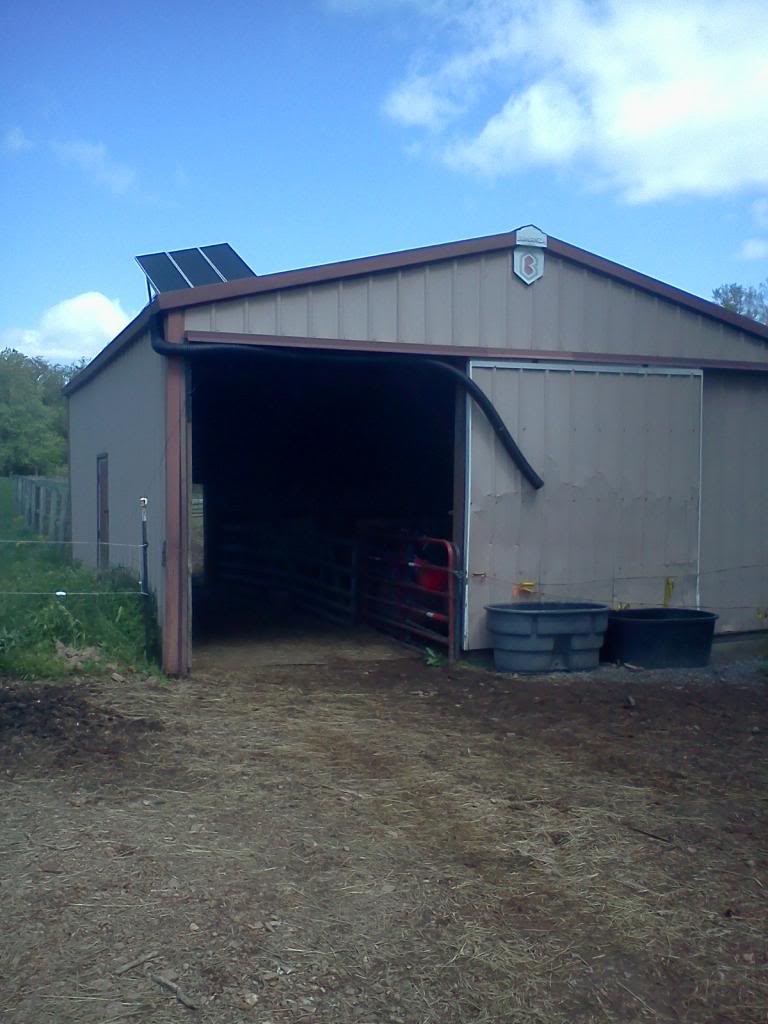ERD50
Give me a museum and I'll fill it. (Picasso) Give me a forum ...
Here are some interesting facts about solar power. There is certainly a great opportunity here for a person of vision.
7 impressive solar energy facts (+ charts) - ABB Conversations
Well, they are interesting and impressive, but when you add context, I'm not sure where we go with this. What 'great opportunity' is so certain?
Some context: OK, so the earth receives many times more solar radiation power than other sources we have. I don't think they are factoring ~ 10% efficiency in capturing/converting, and of course it's absurd to even think about covering every square inch of land with solar collectors. So it's a rather meaningless number (but still impressive).
So for some perspective, let's get down to the personal level. I went to a solar panel site, entered my location (N IL) and household electrical usage (rounded to 1 MWh/month, 12/year), and asked to calculate how much panel space I would need to 100% replace my average annual consumption (average will be important later). It said 898 square feet of roof space, let's count on some future eff improvements and round down to 800, or about 20 feet by 40 feet. That's a fair amount of south-facing roof (I'll ignore the costs for now).
But that's only a portion of my energy usage, let's look at more if we are thinking solar can replace these other sources. So let's say I replace my cars with EVs. If I assume the average 12,000 miles on one car, and say 6,000 for a second vehicle per household, we need enough KWh for 18,000 miles. Assuming 300 watts per mile at the charger, that's another 5.4 MWh to add to the 12, getting up to ~ 1160 sq feet of panels (58' x 20').
OK, how about heating my house? Maybe thermal would be more efficient, but would I have room for thermal system that would be mostly used in the winter months, and enough for the PV also. So for simplicity, I assumed PV and a heat pump with a COP of 3.0, and converted my NG gas usage to therms to BTUs, etc.
That brought up another point - my peak energy usage is in winter. Even my electric bill is generally higher in Jan-Feb than in the summer (running lights more hours/day, running the furnace blower?), unless we get a real heat wave. So my peak energy usage is in a month with low solar energy available to me - a double whammy. I found month-month data for solar panels adjusted throughout the year versus a fixed 'optimal', and I would still need ~ 25% more panels for the same power in Jan-Feb as the average numbers they use in their calculations, assuming I adjusted the angle of my panels throughout the year (or maybe just optimized for winter, and 'wasted' energy the rest of the year?).
So when I factor that all in, I come up with over 1500 sq feet of south facing panels ( 75' x 20' ). The narrow side of my house faces south ( ~ 35' wide with overhangs?), so that would be some structure to get that many panels up there spaced out so they don't shade each other. It might start shading my neighbor's house?
And we haven't even talked about the businesses that I trade with. I imagine most businesses are more energy intensive than a home.
And that assumes we have storage technology. Heck, it isn't practical to store a day's worth of power overnight, or even a few hours. How would we store enough for a week or more of overcast days?
So that's part of the problem with most renewables - you either need massive storage on a huge scale (and even more energy sources since storage always involves losses), or we keep the entire infrastructure in place so we can handle an extended outage. And you can't ramp up a lot of those sources quickly, so you at least need enough storage to get you through the ramp up. All that makes it outrageously expensive - one or more days of storage plus a full infrastructure ready to roll.
It might sound impressive, but it gets complicated very quickly.
I just saw an article about how residential solar installation can hurt utility companies in a controversial way. ...
Yes, I've been seeing some of these articles also. I have not dug into them very deep yet, but it's easy to see some of the issues. A solar panel install that nets to zero gets the use of that grid for free (or close to it). I've read that as solar approaches 10% of the total power, it is causing problems for the grid operators, as they don't have control over the sun. As I pointed out above, you still need nearly all the base line and peaker power and grid capacity ready, in case a spike in demand occurs during a shady period.
Grid operators have to run a fine line between cutting back their baseline power (usually coal), and relying on their more expensive peaker plants to cover any drops in sun/wind. Cut too much base line and costs go up, and you risk brown-outs. Cut too little, and the sun/wind go to waste.
I still say conservation seems cheaper, more achievable and would provide more actual results than current attempts to hit some magic X% of renewables, with today's (or the next decade's) technology. I think other power sources will come on-line - when they are ready. If they are pushed before they are ready, we will likely have back-lashes and more problems.
-ERD50

